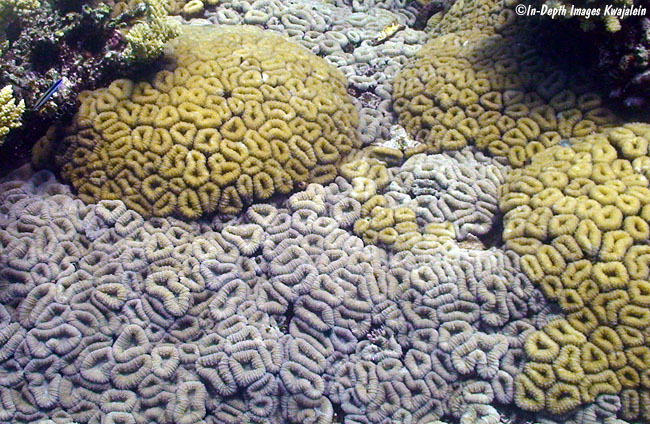
Lobophyllia corymbosa is extremely common, mostly on lagoon and pinnacle reefs where it forms large rounded often overlapping domes.

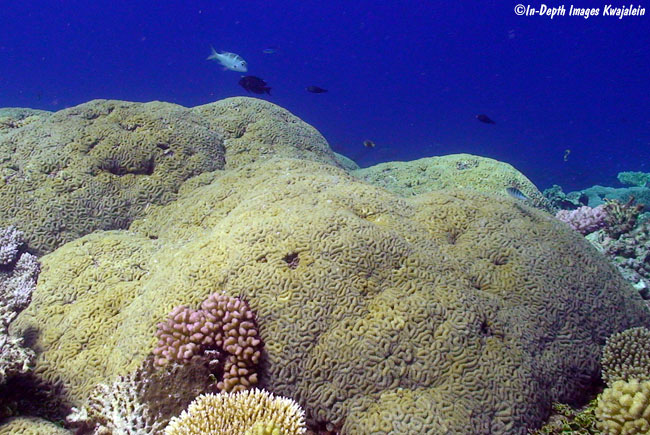
Merging colonies often have different colors, which I assume is caused by the color of the symbiotic zooxanthellae algae incorporated within the coral's tissue. As the colonies grow, they seem to merge into one.
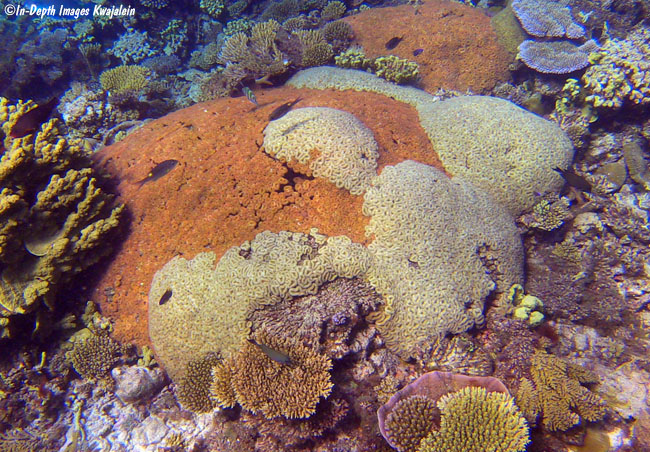
Each corallite on the outer surface is at the end of a long stalk, separate from the stalks of other polyps. Lobophyllia corymbosa, unlike the similar looking L. hemprichii, has stalks that are only loosely connected. If the colony is subject to heavy storm surge, or sometimes even if it is growing on a slope and becomes too heavy, the colony can split up into its individual stalks. In the photo below, something large must have decided to dig down into the colony looking for creatures that live between the stalks. We have seen large triggerfish pulling at these and other colonies, and one of those may have caused this damage. The hole is a good half meter in diameter.
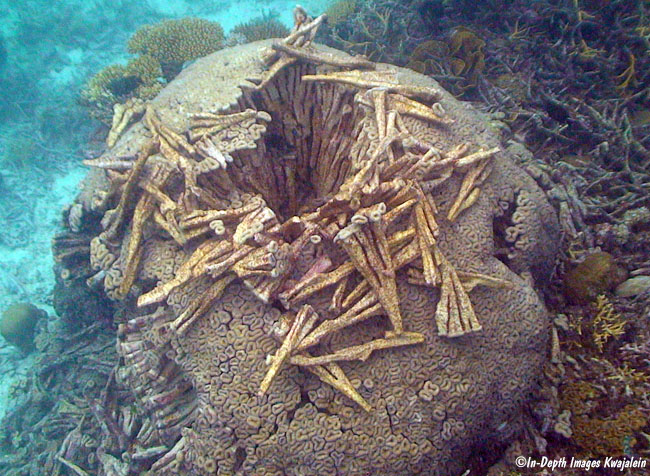
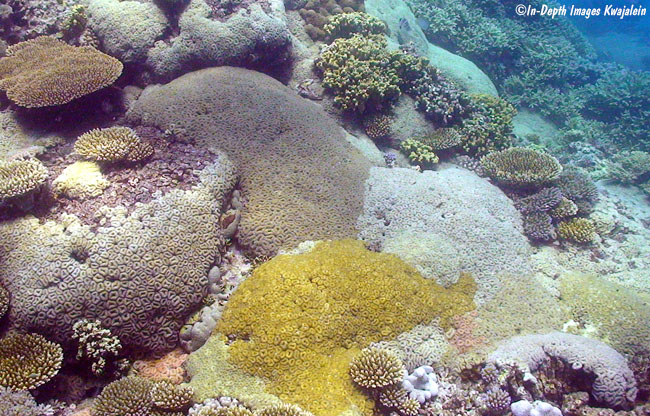
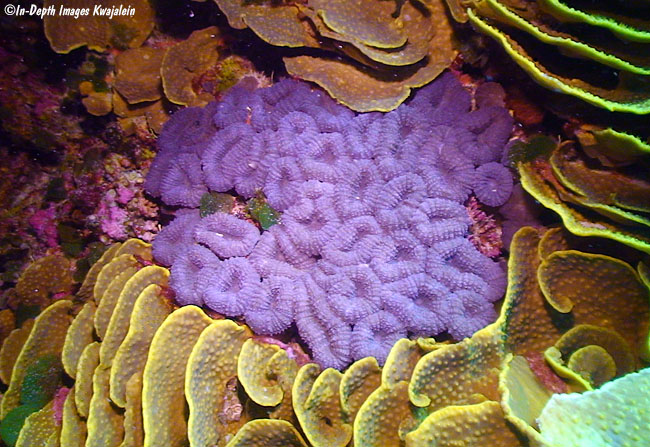
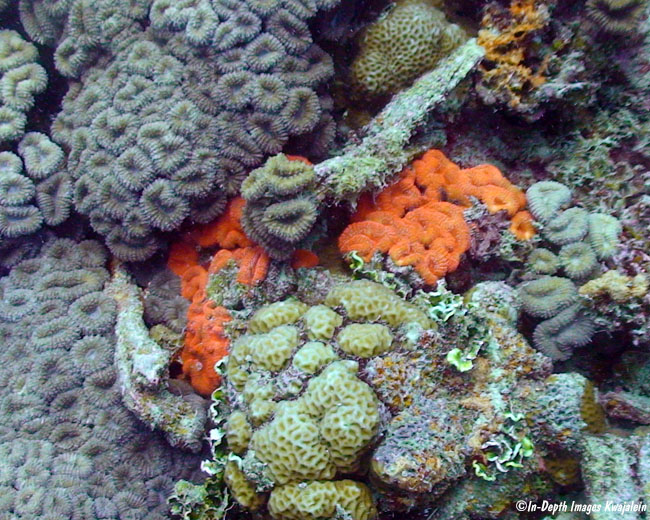
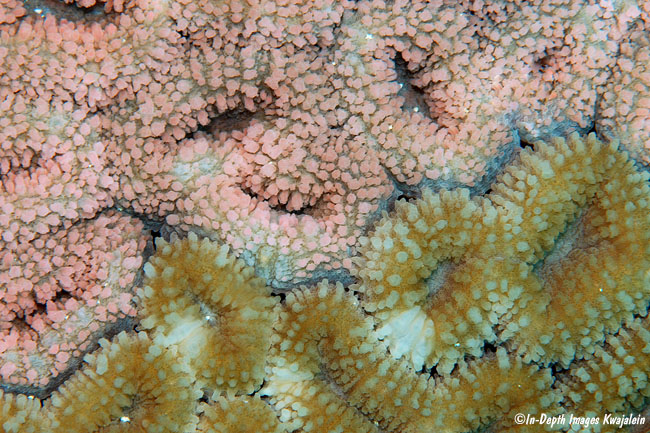
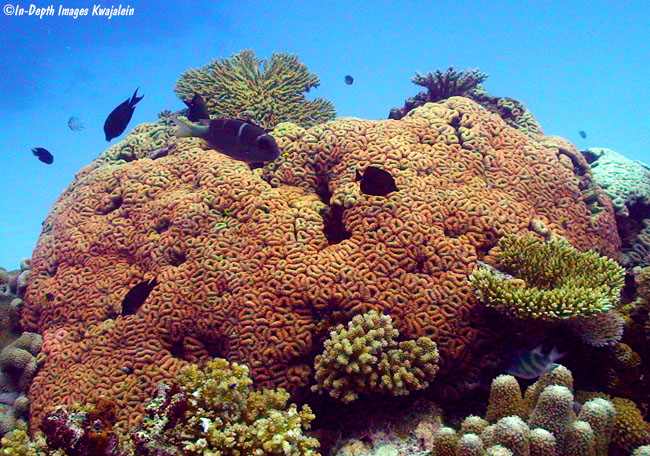
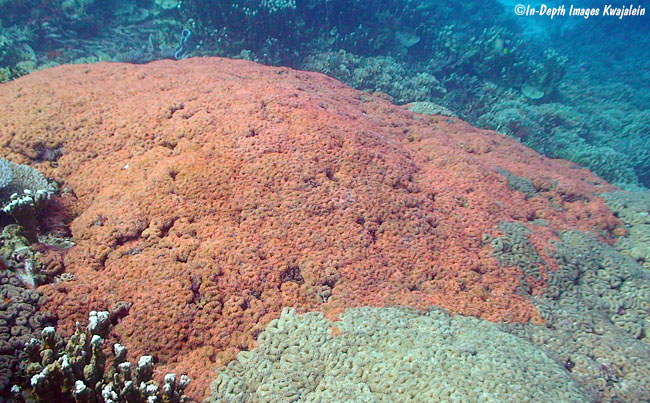
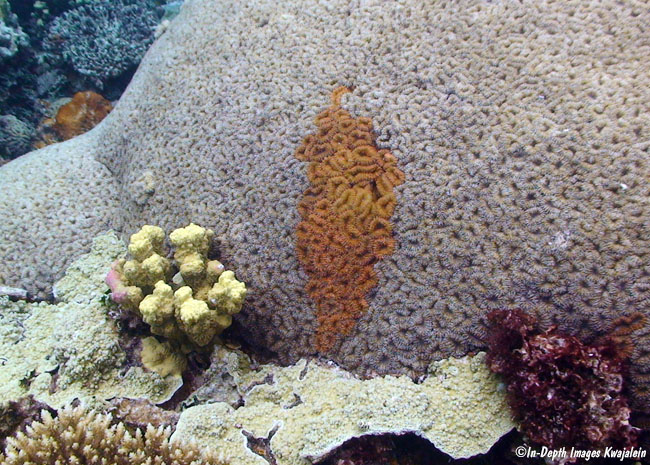
Lobophyllia corymbosa seems to be a fast growing species since it often appears to engulf other corals. Here it is grouwing around and probably ultimately over a colony of Pocillopora.
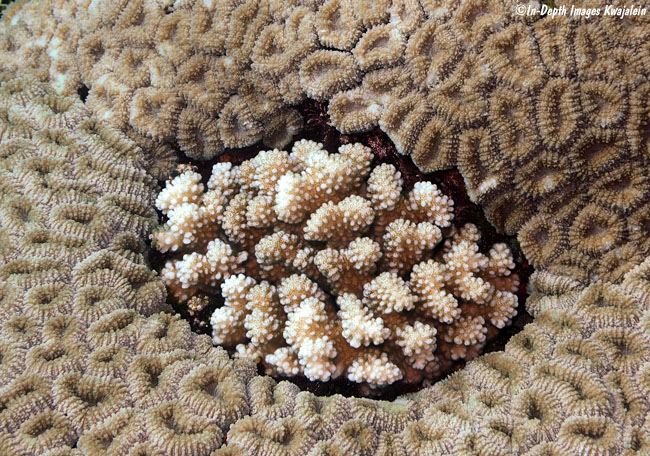
Here Lobophyllia corymbosa is growing around tall, stout stalks of Acropora, and again will probably eventually engulf them entirely.
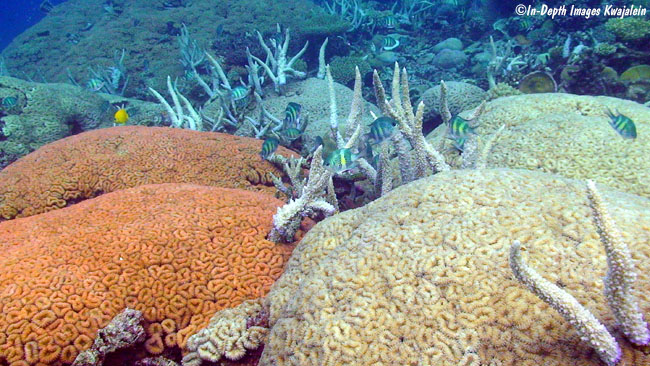
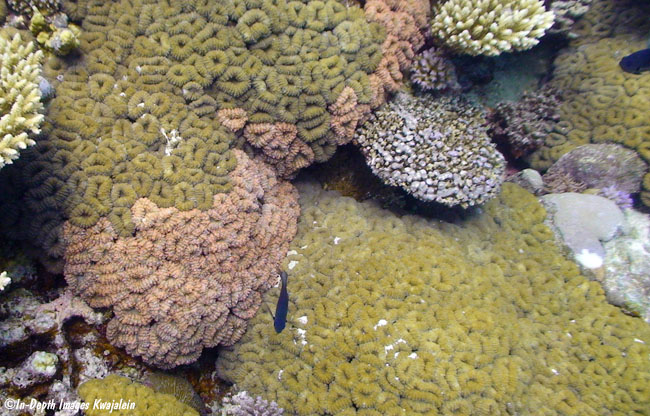
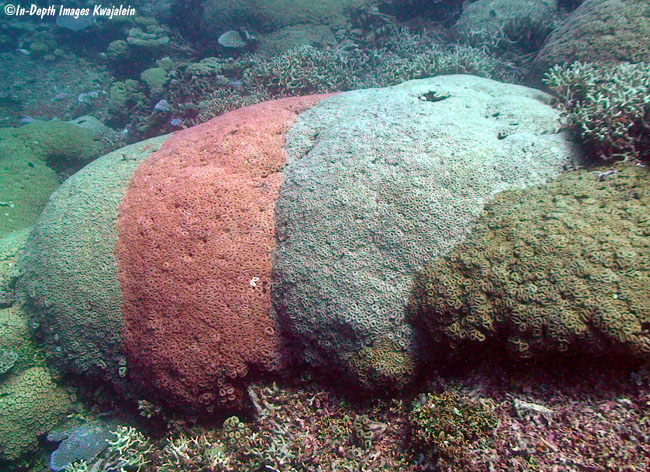
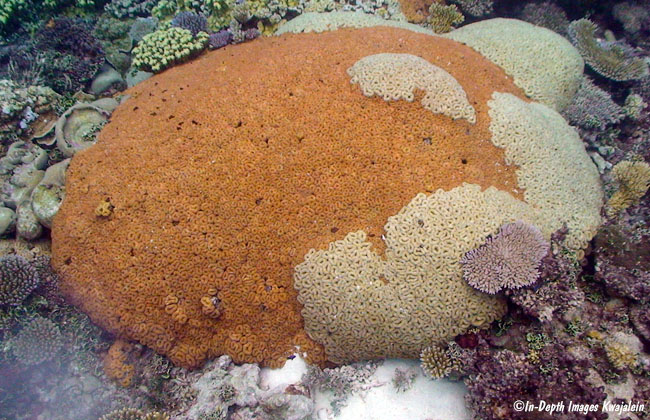
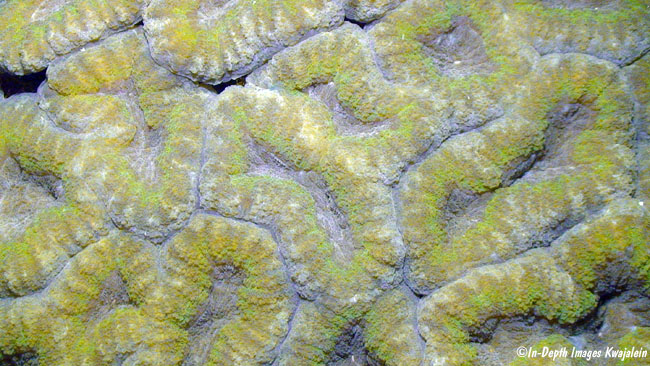
When the water gets too warm, this species, like many others, loses its symbiotic zooxanthellae algae, turns white, and often dies.
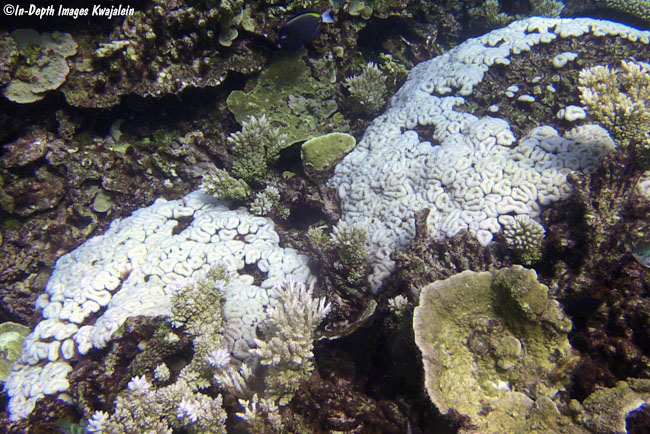
A single bleached polyp in a field of healthy ones.
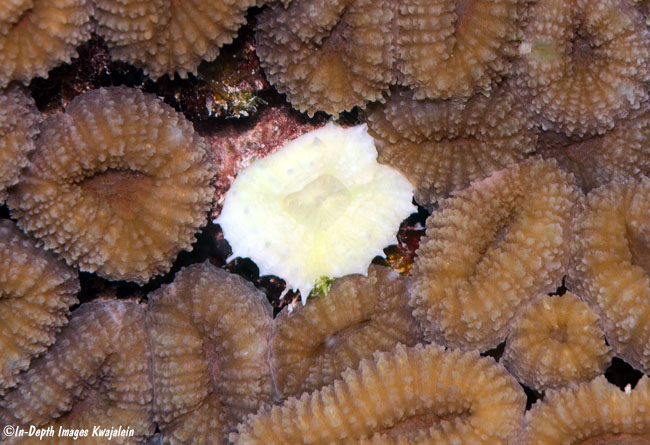
Sometimes the bleaching was sporadic, randomly taking individual polyps.
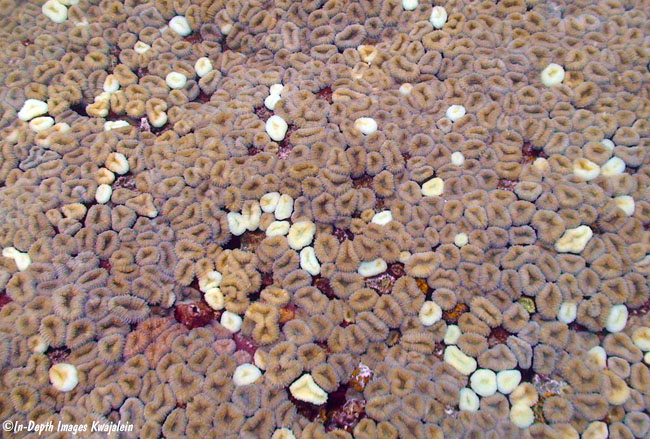
Created 23 April 2020
Updated 9 June 2023